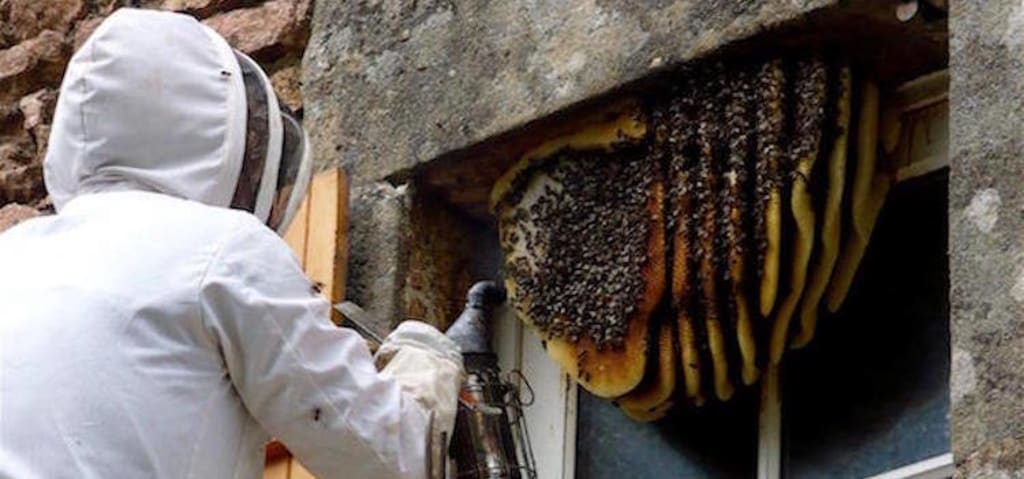Buzz Off! Effective Strategies for Bee Control in Greenwich
Bee Control in Greenwich

Bee control in Greenwich is a crucial concern for homeowners and businesses alike. While bees play a vital role in pollination and ecosystem balance, their presence in residential areas can pose risks, especially to individuals allergic to bee stings. This article delves into effective strategies for bee control in Greenwich, focusing on humane and eco-friendly methods to manage bee populations without causing harm to these important pollinators.
Understanding Bee Behavior
Before diving into control strategies, it's essential to understand bee behavior. Bees are attracted to sources of food, water, and shelter. In urban environments like Greenwich, they often nest in hollow trees, wall voids, or even within structures. Identifying these attractants and nesting sites is the first step in effective bee control.
Inspection and Identification
The initial phase of bee control involves thorough inspection and proper identification of bee species. Different species may require different control methods. For instance, honey bees are crucial pollinators and are often relocated rather than exterminated. On the other hand, aggressive species like Africanized bees may necessitate more immediate action.
Integrated Pest Management (IPM) Approach
One of the most effective strategies for bee control in Greenwich is the use of Integrated Pest Management (IPM) techniques. This approach focuses on prevention, monitoring, and control while minimizing environmental impact.
Preventative Measures
Preventative measures are key components of IPM. These include sealing cracks and gaps in buildings to prevent bee entry, using screens on windows and vents, and maintaining a tidy outdoor environment to reduce bee attractants like standing water and food debris.
Natural Repellents and Deterrents
Natural repellents and deterrents can also be effective in controlling bee populations. Substances like peppermint oil, citronella, and garlic-based sprays are known to deter bees without harming them or the environment.
Professional Bee Removal Services
In cases where bee populations pose a significant risk or nuisance, hiring professional bee removal services is recommended. These professionals have the expertise and equipment to safely remove bee colonies, especially in hard-to-reach areas like wall voids or chimneys.
Environmental Considerations
When implementing bee control strategies in Greenwich, it's crucial to consider environmental impacts. Avoiding the use of harsh chemicals that can harm beneficial insects and pollinators is essential. Opting for eco-friendly and non-toxic solutions ensures a balanced approach to pest management.
Bee-Friendly Landscaping
One effective way to control bee populations in Greenwich is through bee-friendly landscaping practices. This involves planting bee-repelling plants such as marigolds, geraniums, and mint in areas where bee activity is unwanted. Additionally, creating designated bee-friendly zones away from high-traffic areas can divert bees to more suitable locations.
Utilizing Bee Traps
Another strategy for bee control in Greenwich is the use of bee traps. These traps are designed to attract and capture bees without harming them. By strategically placing traps near nesting sites or areas of high bee activity, homeowners can reduce bee populations without resorting to chemical methods.
Educational Outreach Programs
Community-based educational outreach programs can also contribute significantly to bee control efforts. These programs can educate residents about bee behavior, the importance of pollinators, and practical steps they can take to coexist with bees safely. By fostering a sense of responsibility and understanding, communities can work together to address bee-related concerns effectively.
Research and Development
Investing in research and development of innovative bee control technologies is essential for long-term solutions. Collaborating with entomologists, environmentalists, and pest control experts can lead to the development of new, sustainable bee control methods that minimize harm to bees and the environment.
Community Involvement and Education
Community involvement and education play vital roles in effective bee control. Raising awareness about bee behavior, the importance of pollinators, and sustainable pest management practices encourages responsible actions among residents and businesses.
Conclusion
Bee control in Greenwich requires a multifaceted approach that balances pest manage, ment needs with environmental stewardship. By understanding bee behavior, employing preventative measures, utilizing IPM strategies, and promoting community education, Greenwich can effectively manage bee populations while safeguarding pollinator health and ecosystem integrity. Incorporating alternative bee control methods such as bee-friendly landscaping, bee traps, educational outreach programs, and research and development initiatives can enhance existing strategies for bee control. By exploring diverse approaches and fostering community engagement, Greenwich can achieve a balanced and effective approach to managing bee populations while preserving the health of pollinators and ecosystems.
About the Creator
Enjoyed the story? Support the Creator.
Subscribe for free to receive all their stories in your feed. You could also pledge your support or give them a one-off tip, letting them know you appreciate their work.





Comments
There are no comments for this story
Be the first to respond and start the conversation.